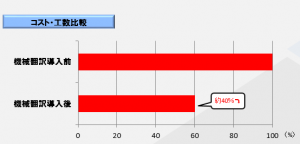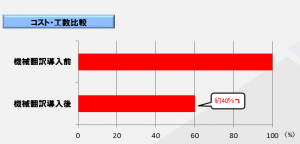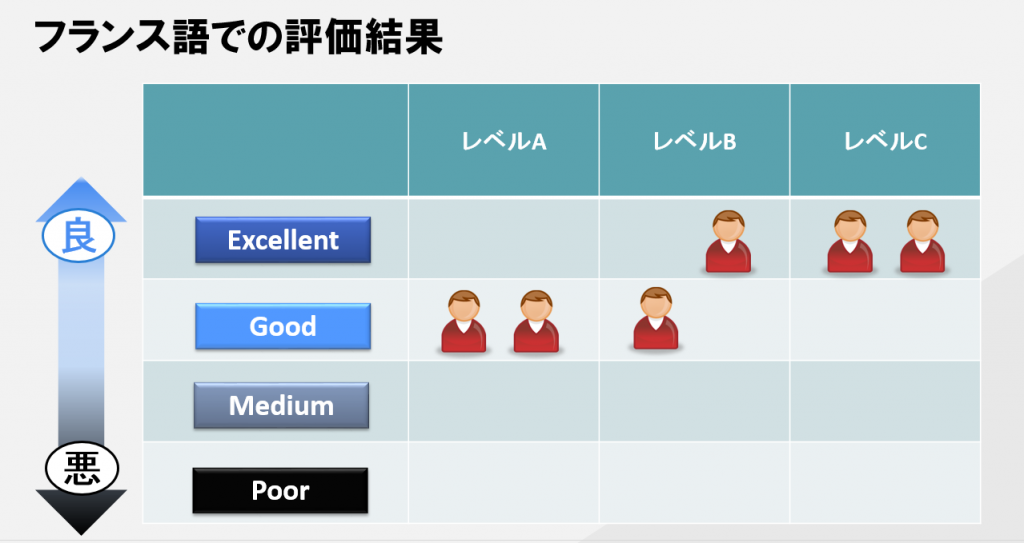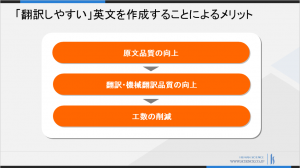We often receive inquiries from those who participate in our seminars and conferences regarding
・"Is it possible to implement machine translation for Japanese to English translation?"
・"Are there any examples of implementing machine translation in Japanese-English translation?"
This is the question.
More and more companies have the request to translate technical documents and service manuals created in-house into English using machine translation (automatic translation) with minimal cost and time.
However, regarding machine translation from Japanese to English,
there are still fewer case studies compared to European languages,
and it seems that many people have the question, "Does machine translation actually produce results?"
Therefore, this time we will introduce an example of implementing machine translation in Japanese-English translation.
●Introduction of Japanese-English machine translation for support content
The translation target for this case is "Japanese support content".
We received an inquiry from you with the request to
"Translate into English using machine translation without incurring costs and time"
.
——————————————————————————————–
Project OverviewTranslation Target Item: Support Content for IT Products
Language: Japanese to English
Volume: 10,000 to 20,000 characters per project
* No corpus available for regular occurrence statistics-based engine.
——————————————————————————————–
In fact, this client had already implemented machine translation for "English to European languages."
Therefore, when they used the same engine for Japanese-English translation, they experienced poor quality, which actually increased costs and labor.
Therefore, our company assisted in selecting an engine suitable for Japanese-English machine translation.
In this project, it was noted that there was no existing data such as past translation memories to serve as a corpus.
After verifying the quality with a rule-based engine,
we decided to use the engine that produced the best quality for the project.
Regarding quality standards, we have decided to implement post-editing at the level of
"It is acceptable to be somewhat unnatural as long as the meaning is accurately conveyed" based on customer requests.
●Effects of Implementing Machine Translation
Using the optimal machine translation engine,
"It is acceptable if the meaning is conveyed accurately, even if it is somewhat unnatural" level of
machine translation results,
We were able to achieve this.

From our customers,
・I struggled with the previous implementation that did not go well
It has become much easier to perform Japanese-English machine translation smoothly, which has been a great help
・It was found that there is an optimal engine for each language.
In the future, we would like to introduce machine translation to other content such as internal documents and manuals, in addition to support content.
We received comments!
As shown in the case introduced this time,even for Japanese-English translation,
depending on the conditions and workflow,
it is entirely possible to achieve cost reduction and shorten the translation period by using machine translation.
However, in the case of "translation from English to European languages" and,
"translation from Japanese to English",
it is often the case that suitable machine translation engines differ,
so please be sure to choose the optimal engine.
We encourage everyone to conduct a verification of machine translation using the current data at least once.
・What level of output quality can be achieved?
・How much cost reduction and translation time shortening is possible?
What should be prepared for the introduction of machine translation?
We recommend checking points such as these.
At Human Science, we conduct data validation for Japanese-English machine translation, as well as
provide suggestions for optimal engines and workflows.
Please feel free to contact us.
On June 16, we will also hold the "Japanese-English Machine Translation Utilization Seminar".
We plan to introduce key points for effectively using machine translation (automatic translation) in Japanese-English translation,
so please look forward to it!
If the form is not available, please send your inquiry via email to hsweb_inquiry@science.co.jp.
Thank you.
Alternatively, please feel free to contact us by phone at TEL: 03-5321-3111.

























